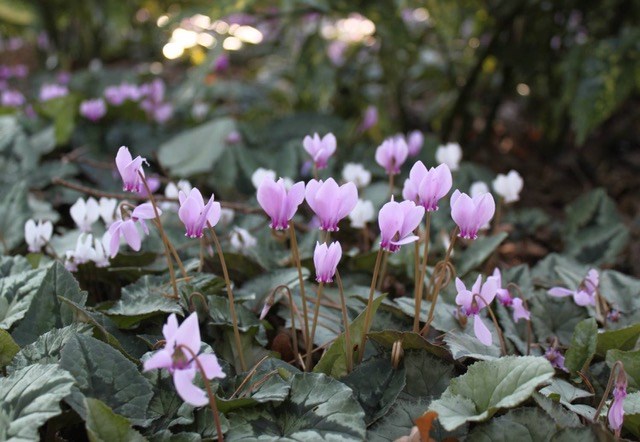I can’t help myself. I have to talk about planting bulbs again, especially as time draws to a close as to when we can plant our favourite spring time flowers. Bulbs should be planted in your garden by at least end of October.
I spend most of my winter months perusing treasured garden design magazines, books and websites planning my gardening creations for the next year. I started early this fall.
I ran across an amazing article that was so simple I felt I had to share. What caught my eyes was the title, “12 Months of Bulbs, Tubers & Corms” in the most recent copy of the Garden Design magazine. https://www.gardendesign.com/
How easy is that to make sure you have colour every month in your garden? The following is a list that will be a delight in containers and garden beds alike.
January - Snowdrops (Galanthus) are one of the earliest blooming spring bulbs. If any of our little honeybees decide to wake early, these little gems offer early nectar. These plants can tolerate more shade and should be planted now.
February - Snow crocus (Crocus chrysanthus) are the earliest crocus to bloom. They range in colour from white to deep purple and bloom from February to March. I love these beauties popping up in my lawn in February. Plant in full sun to part shade in the fall.
March - Daffodils (Narcissus) are brilliant in our gardens from late winter to midspring. They are a very versatile bulb as they can be forced indoors to bloom earlier, used as cut flowers and for naturalizing in large swaths of colour. Plant now.
April - It is best to choose Darwin hybrid tulips as they have the best potential of blooming every year. Plant in the fall in full sun.
May - Alliums are one of my favourite bulbs. Tall, stately, ball-shaped ornamental onions with many shades of purple look fabulous in a late spring garden. Our friends, the bumblebees, love this plant. Plant in the fall in full sun.
June - Asiatic hybrid lilies grow 25 to 36 inches tall so make a great back of the border plant. These brilliant coloured plants attract hummingbirds. Plant in the spring in full sun to part shade.
July - Crocosmias are vigorous perennials (can spread easily so make sure to contain them), that produce arching sprays of flowers in scorching hot tones. Hummingbirds LOVE this flower. Plant corms now in full sun and give them a mulch in the winter.
August - Gladiolus corms can be planted now. Plant in drifts or swaths to be blessed with powerful colours during the hot summer days.
September - Plant dahlias in spring in full sun for blooms from midsummer right up until frost. The stems will need staking. Dahlias are great cut flowers in summer bouquets. Dig up the bulbs in the fall and store during winter.
October - Gardens are all in bloom in October with autumn crocus, when most flowers are starting their winter rest. Plant in fall in full sun or part shade in the fall. In the spring the autumn crocus produces 12-inch long green leaves which die down until the fall when white, pink or purple flowers pop out of the earth attract many types of bees.
November - Cyclamen hederifolium is a wonderful ground cover under shrubs and deciduous trees. The arrival of its flowers is traditionally said to mark the beginning of autumn, blooming in late summer to the end of November. The tiny little corms can be planted in the fall in dappled shade in moist soil, mulched in with leaf mould or compost. Make sure the corms will not be waterlogged over the winter.
December - Guernsey lily (Nerine bowdenii) is already in bloom in some gardens (VanDusen Botanical Gardens) but typically will show off their beautiful pink blossoms early winter. Guernsey lily should be planted in the spring in well-draining soil. Place the bulbs under a south-facing canopy - under branches, for example - to protect it from early frost.
Instead of planting all your bulbs in straight little rows, choose a more natural-looking planting. Plant bulbs in large, casual drifts.
Follow instructions for planting depth. A 2-inch layer of mulch over newly planted bulbs will retain moisture and keep the soil warmer a bit longer so roots can establish more quickly.
Spring and fall will certainly be a busy time for us as we plant our 12 months of colour in our gardens for all to enjoy!
Lynda Pasacreta is the current president of the Richmond Garden Club. For more information, visit richmondgardenclub.ca.



